64 Folic Acid Rich Foods, Fruits & Vegetables to Include in Your Diet
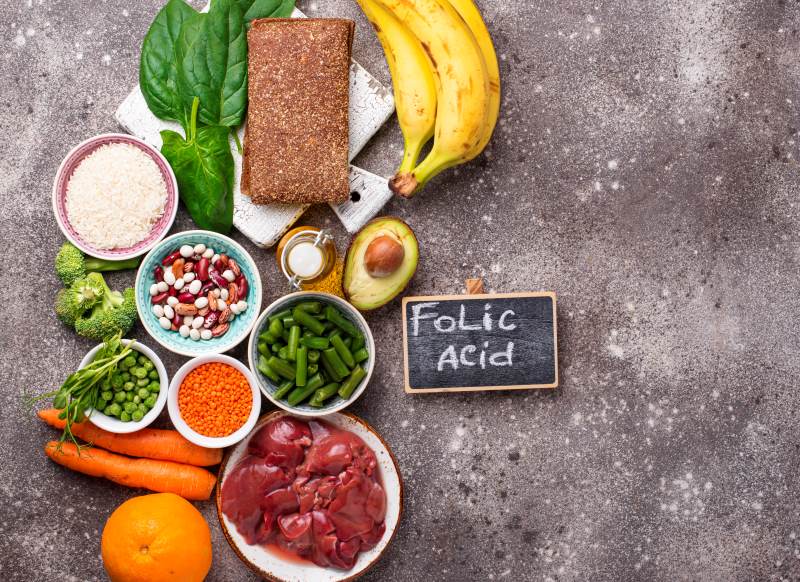
In the pursuit of a balanced and nourishing diet, incorporating Folic Acid Rich foods is paramount for maintaining optimal health. Folic acid, a vital B vitamin, plays a crucial role in various bodily functions, including cell growth and development. You can ensure adequate intake of this essential nutrient by integrating Folic Acid Rich foods into your daily meals, such as fruits and vegetables. Let’s dive into these folic acid food sources to utilise them at their maximum level.

Table of Contents

What is Folic Acid?
Folic acid (folate) is an artificial kind of vitamin which plays different roles within human beings, including DNA synthesis, cell division, and the development of red blood cells, among others necessary for the body’s function. Its significance in sustaining good health cannot be overemphasised, especially during pregnancy, where it aids proper fetal growth while at the same time reducing chances for neural tube defects.
What are the Sources of Folic Acid?
Folate can be obtained from various natural sources, such as leafy green vegetables like spinach or kale and legumes, including lentils or chickpeas. Fortified grains and cereals, too, contain high amounts of folic acid and should, therefore, form part of our everyday diet plan, thereby ensuring we attain desirable health results, particularly for expectant mothers.
Top 64 Food Items High in Folic Acid
Take a flavorful journey through these top 64 folic acid-rich foods designed to feed your body and excite your taste buds. This list includes colorful vegetables, juicy fruits, whole grains, and nuts and seeds full of nutrients, among others.
List of Folic Acid Rich Vegetables
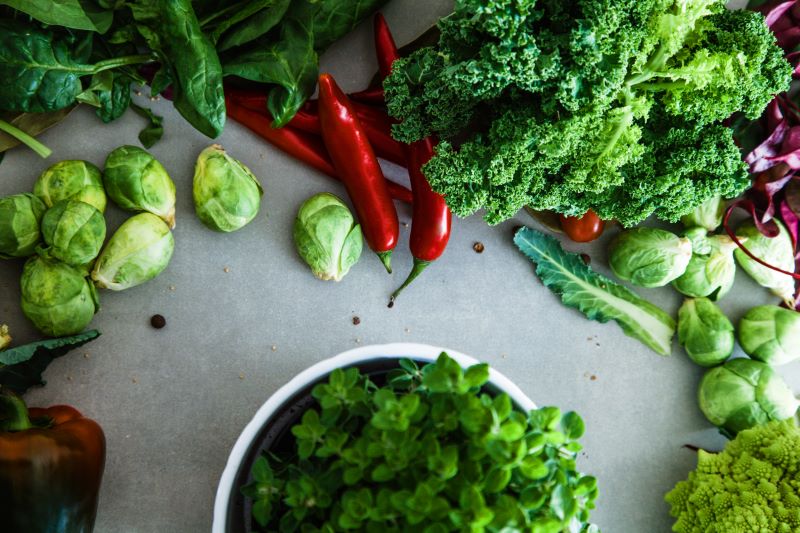
These nutrient-dense veggies are essential for overall health and well-being. They are also high in folate, which is necessary for many bodily functions, such as cell division or DNA synthesis.
SNo. |
Vegetables | Folic Acid Content (Per 100 grams) |
| 1 | Spinach | 194 mcg |
| 2 | Asparagus | 52 mcg |
| 3 | Broccoli | 63 mcg |
| 4 | Brussels Sprouts | 61 mcg |
| 5 | Beet Greens | 109 mcg |
| 6 | Collard Greens | 170 mcg |
| 7 | Kale | 62 mcg |
| 8 | Romaine Lettuce | 58 mcg |
| 9 | Artichokes | 68 mcg |
| 10 | Okra | 60 mcg |
| 11 | Turnip Greens | 118 mcg |
| 12 | Swiss Chard | 36 mcg |
| 13 | Bok Choy | 38 mcg |
| 14 | Green Peas | 65 mcg |
| 15 | Mustard Greens | 187 mcg |
| 16 | Cabbage | 43 mcg |
List of Fruits Rich in Folic Acid
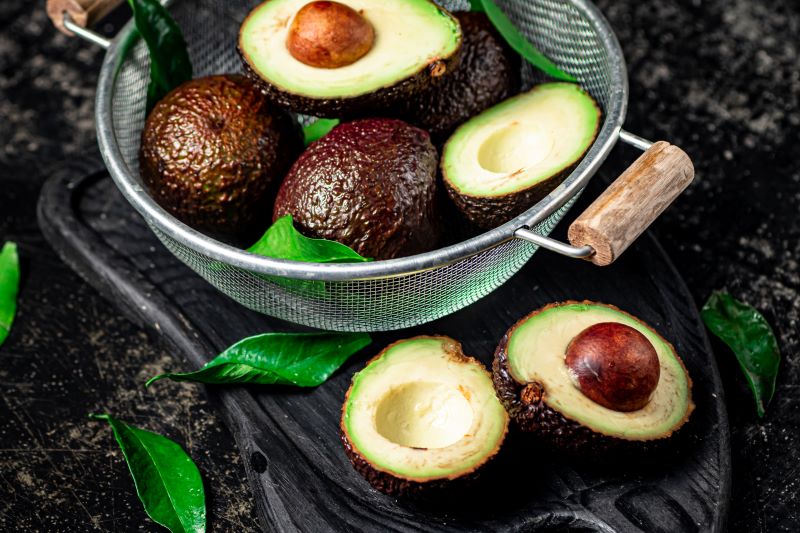
Enjoy nature’s candy! These fruits have tons of flavour and are packed with essential vitamins that will keep you healthy inside out while providing adequate amounts of dietary folate.
SNo. |
Fruits | Folic Acid Content (Per 100 grams) |
| 17 | Avocado | 81 mcg |
| 18 | Papaya | 37 mcg |
| 19 | Oranges | 30 mcg |
| 20 | Strawberries | 24 mcg |
| 21 | Raspberries | 25 mcg |
| 22 | Bananas | 20 mcg |
| 23 | Cantaloupe | 21 mcg |
| 24 | Kiwi | 25 mcg |
| 25 | Mango | 43 mcg |
| 26 | Grapefruit | 37 mcg |
| 27 | Pineapple | 19 mcg |
List of Cereals and Dairy Products Containing Folic Acid
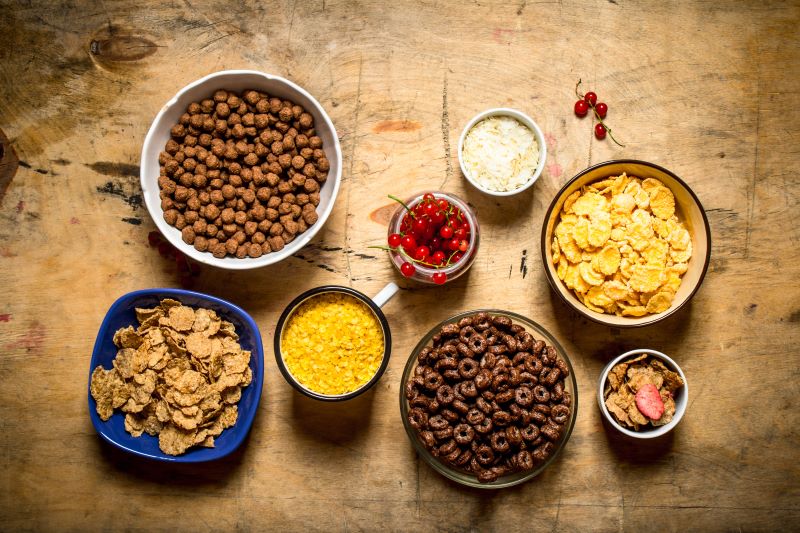
Jumpstart your morning routine by eating fortified cereal or having milk for breakfast. Doing so gives an easy way towards getting enough folic acid into the body –– ensuring both physical and mental health are at their best throughout the day!
SNo. |
Cereals and Dairy Products | Folic Acid Content (Per 100 grams) |
| 28 | Fortified Oatmeal | 50-150 mcg |
| 29 | Fortified Corn Flakes | 100-400 mcg |
| 30 | Fortified Wheat Bread | 60-120 mcg |
| 31 | Fortified Whole Wheat Pasta | 70-100 mcg |
| 32 | Fortified Rice | 60-120 mcg |
| 33 | Fortified Yogurt | 10-30 mcg |
| 34 | Fortified Milk | 10-30 mcg |
| 35 | Fortified Cheese | 5-20 mcg |
| 36 | Fortified Cottage Cheese | 5-15 mcg |
List of Seeds and Nuts Rich in Folic Acid
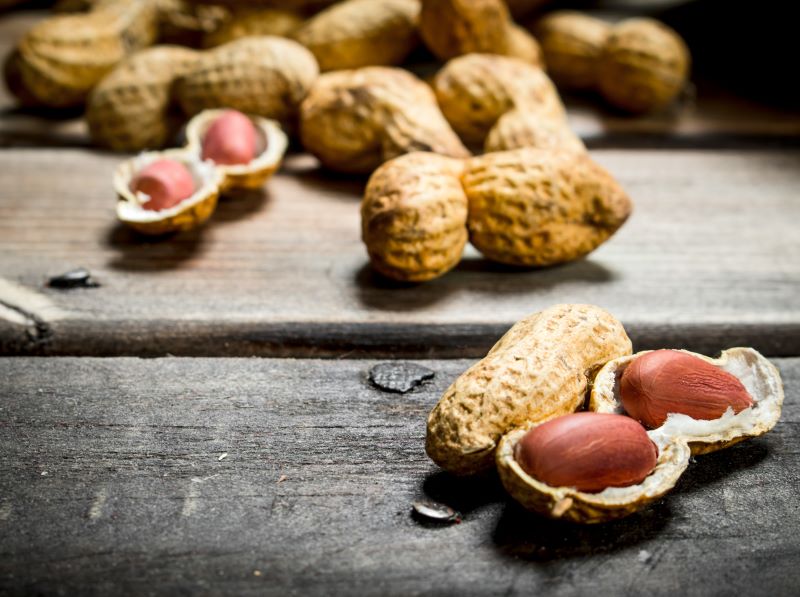
Regarding snacking smartly on the go, look no further than these densely nutritious little guys. They are full-packed snacks rich in energy-giving properties due to their high naturally occurring folic acid content, among other vital minerals our bodies need daily.
SNo. |
Seeds and Nuts | Folic Acid Content (Per 100 grams) |
| 37 | Sunflower Seeds | 227 mcg |
| 38 | Peanuts | 240 mcg |
| 39 | Flaxseeds | 87 mcg |
| 40 | Chia Seeds | 120 mcg |
| 41 | Pumpkin Seeds | 58 mcg |
| 42 | Almonds | 44 mcg |
| 43 | Pistachios | 70 mcg |
| 44 | Walnuts | 98 mcg |
| 45 | Cashews | 25 mcg |
| 46 | Sesame Seeds | 97 mcg |
| 47 | Pecans | 22 mcg |
| 48 | Hazelnuts | 113 mcg |
| 49 | Brazil Nuts | 22 mcg |
| 50 | Macadamia Nuts | 10 mcg |
| 51 | Pine Nuts | 34 mcg |
List of Animal and Seafood High in Folic Acid
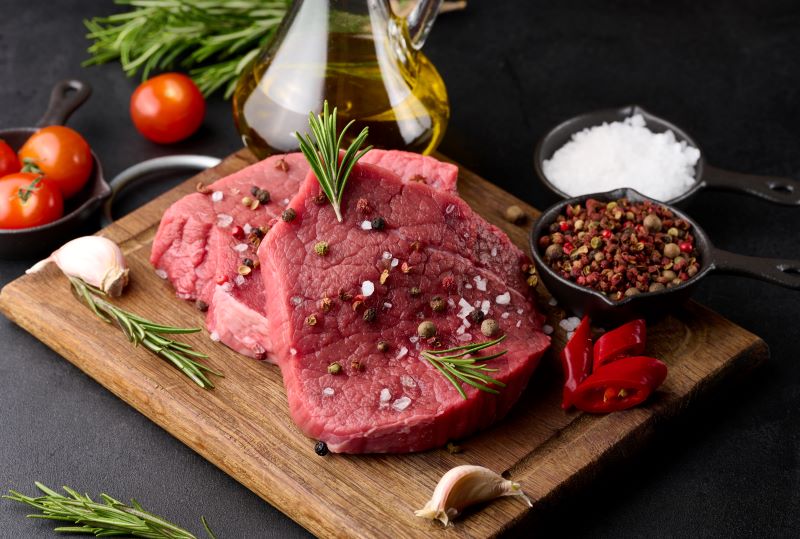
Enjoy the best from both worlds- land & ocean with these delicious sources containing essential nutrients required by our bodies for good health and living standards achievement while still adding some flavoursome variation into one’s diet plan.
SNo. |
Animal and Seafood | Folic Acid Content (Per 100 grams) |
| 52 | Beef Liver | 290 mcg |
| 53 | Chicken Liver | 240 mcg |
| 54 | Calf's Liver | 320 mcg |
| 55 | Eggs (yolk) | 146 mcg |
| 56 | Salmon | 25 mcg |
| 57 | Tuna | 24 mcg |
| 58 | Shrimp | 19 mcg |
| 59 | Crab | 26 mcg |
| 60 | Lobster | 23 mcg |
| 61 | Mussels | 23 mcg |
| 62 | Sardines | 25 mcg |
| 63 | Turkey | 36 mcg |
| 64 | Chicken Breast | 34 mcg |
How Much Folic Acid Should You Intake?
According to the National Institutes of Health (NIH), the recommended daily intake of folic acid varies based on factors like age, gender, and life stage. Here is the list of RDI per day according to age.
Age Group |
Recommended Folic Acid Intake (micrograms per day) |
| Infants 0-6 months | 65 mcg |
| Infants 7-12 months | 80 mcg |
| Children 1-3 years | 150 mcg |
| Children 4-8 years | 200 mcg |
| Children 9-13 years | 300 mcg |
| Teens 14-18 years | 400 mcg |
| Adults 19+ years | 400 mcg |
| Pregnant Teens/ Adults | 600 mcg |
| Lactating Teens/ Adults | 500 mcg |
Health Benefits of Including Folic Acid Rich Foods in Your Diet
Improve your health by adding meals that contain a lot of folic acid into your diet. These are known for their contribution to DNA synthesis and cell growth. Choose foods with lots of nutrients such as these, they can also help you have a better mood and heart health.
- Supports DNA Synthesis: Folic acid is necessary for DNA synthesis and repair, maintaining the genetic integrity of the whole organism.
- Promotes Red Blood Cell Formation: Healthy red blood cell formation requires enough folic acid intake, which carries oxygen throughout the body and maintains energy levels.
- Aids in Neural Tube Development: When it comes to pregnancy, neural tube defects can be prevented by taking enough folic acid, thus supporting normal brain growth and spinal cord formation in babies.
- Supports Heart Health: Folic acid controls homocysteine levels within blood vessels, reducing chances of heart disease such as myocardial infarction or stroke.
- Boosts Mood and Mental Health: By participating in the synthesis of neurotransmitters, folate can contribute to stabilising moods, therefore enhancing mental wellness.
- May Reduce the Risk of Certain Cancers: There are studies indicating that consuming adequate amounts for women may lower one’s likelihood of getting colon cancer, among others, like breast cancer.
- Supports Digestive Health: Folic acid can support proper digestion and nutrient absorption, both leading towards better overall digestive health.
- Boosts Immune Function: In addition, folic acid also supports immunity through increased production & activity of white cells, which help fight off infections.
Different Ways to Include Folic Acid Rich Foods in Your Diet
Get to know some different creative ways to include folic acid-rich foods in your meals or snacks. These may be anything from vibrant salads to smoothies that are good for health generally and will also provide all the necessary daily amounts of this nutrient.
- Bright Salads: Make bright salads with green leafy vegetables such as kale or spinach and other veggies full of folic acid, like broccoli, avocadoes, and asparagus, among others.
- Smoothies: Add fruits like bananas, berries or oranges packed with folic acid into your smoothie for a refreshing and nutritious morning boost.
- Grain Bowls: Prepare grain bowls using whole grains like brown rice, quinoa, or barley as a base, as well as beans, nuts, or seeds containing folic acid.
- Snack on Nuts and Seeds: Eat nuts and seeds, such as sunflower seeds, flaxseeds, and almonds, which contain high folates, which are necessary for our bodies, for convenient yet healthy snacks.
- Fortified Foods: Opt for fortified breakfast cereals, bread, and pasta to meet your daily requirements since they’re enriched with enough folic acid.
- Omelettes/Frittatas: Spinach, peppers and mushrooms have lots of vitamin B9 and can be added to egg dishes like omelettes or frittatas, thus making them flavorful and nutritious.
- Stir-Fries: Colourful stir-fries can be made quickly using different vegetables and lean protein sources such as tofu/chicken over brown rice/quinoa.
What are the Symptoms of Folic Acid Deficiency?
Signs indicating a person lacks vitamin B9 include fatigue to neurological problems like depression or anxiety; hence, people must take enough amounts of folate for optimum well-being.
What are the Health Risks of Not Getting Enough Folic Acid?
Another article should explore what happens when someone doesn’t consume sufficient numbers – birth defects could occur, among other things, caused by anaemia, which makes one more susceptible towards chronic ailments too, so yes, meet those daily needs!
- Neural Tube Defects: Inadequate folic acid during pregnancy may result in neural tube defects such as spina bifida and anencephaly, which can have lifelong effects on the baby.
- Megaloblastic Anaemia: The folic acid shortage causes megaloblastic anaemia, where red blood cells cannot function properly, thus leading to tiredness, weakness and anaemic symptoms.
- Cardiovascular Disease: Folate deficiency increases the risk of cardiovascular diseases like heart attack or stroke due to high levels of homocysteine in the bloodstream.
- Birth Defects: If a pregnant woman does not get enough folate, it can also lead to birth abnormalities like cleft lip/palate or congenital heart defect/lower limb abnormality.
- Depression And Anxiety Disorders: Levels of folate influence serotonin regulation in the brain; therefore, individuals who are low on folate are at greater risk for depressive illnesses and panic disorders.
What are the Side Effects of Excessive Folic Acid Intake?
While folic acid is important for health, overdoing it can be harmful. Here are some of the side effects of excessive folic acid intake.
- Hiding Vitamin B12 Deficiency Symptoms: Too much folic acid in the body can conceal signs of vitamin B12 deficiency, thus delaying its diagnosis or treatment.
- Increasing Cancer Risk: Some studies have suggested that high levels of folic acid may cause tumours to grow more rapidly.
- Interacting with Some Drugs’ Effectiveness: Anticonvulsant and chemotherapy drugs become less effective after excessive folic acid.
- Causing Allergies: Certain persons might get an allergic reaction from excessive amounts of folic acid, leading to hives and itchiness.
- Inducing Nausea and Digestive Problems: Large quantities of folic acids result in stomach discomforts like queasiness and flatulence accompanied by diarrhoea.
- Raising Seizure Susceptibility Among Epileptic Patients: People living with epilepsy who take too much folic acid could suffer from more frequent seizures.
- Possibly Blocking Zinc Absorption: Zinc is required for many different bodily processes, but high doses of folic acid interfere with its absorption.
- Risk to Kidney Damage Patients: If someone has existing renal issues, then taking excessive amounts of folate could worsen their condition or lead to further harm.
Should You Take a Folic Acid Supplement?
Whether or not to take folic acid supplements is dependent on the individual. Age, health status, and dietary intake may affect this decision. For example, during pregnancy or for people with certain medical conditions, it might be necessary to take these supplements to get enough folic acid into their bodies. However, most individuals should be able to meet their needs by eating well-balanced meals containing foods high in folates, such as green leafy vegetables or fortified cereals.
Folic acid is an essential nutrient that supports overall health and well-being. This compound assists DNA synthesis, helps red blood cell production, and contributes to neural tube formation in babies during early pregnancy; hence, its significance cannot be overemphasised.
Nonetheless, moderation counts too much because taking too many can cause more harm than good. You can, therefore, ensure maximum wellness by eating more folic Acid Rich food while seeking advice from doctors when necessary about whether or not you need supplements. Let us embrace all these benefits brought about by folic acid, which nourishes our bodies and makes us healthier again at a time through healthy choices.













